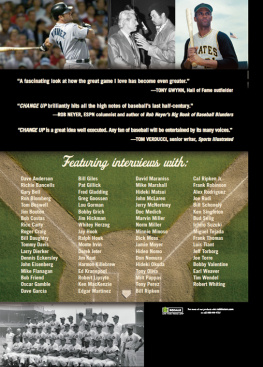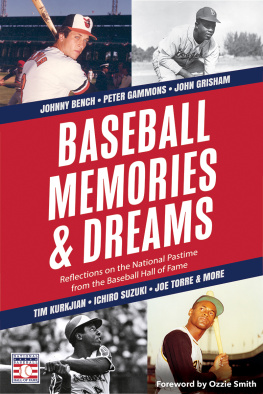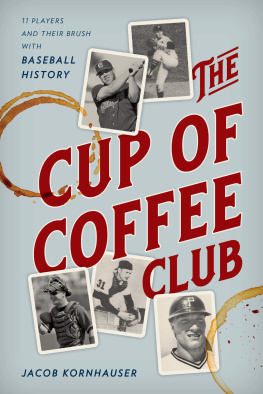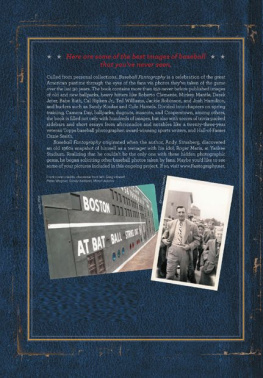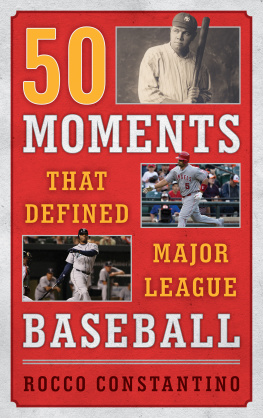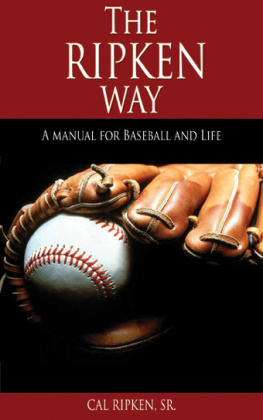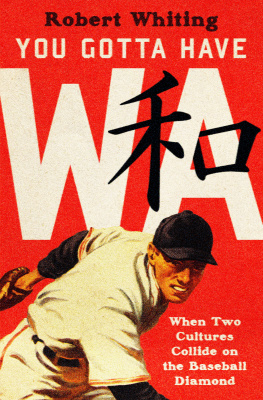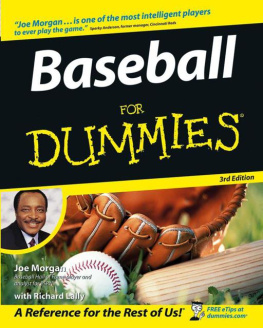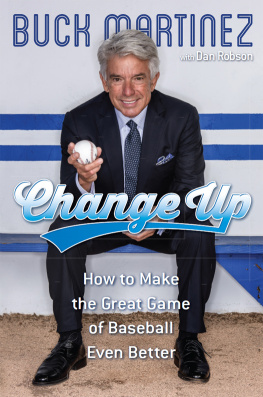A fascinating look at how the great game I love has become even greater.
TONY GWYNN, Hall of Fame outfielder
CHANGE UP brilliantly hits all the high notes of baseballs last half-century.
ROB NEYER, ESPN columnist and author of Rob Neyers Big Book of Baseball Blunders
CHANGE UP is a great idea well executed. Any fan of baseball will be entertained by its many voices.
TOM VERDUCCI, senior writer, Sports Illustrated
Mention of specific companies, organizations, or authorities in this book does not imply endorsement by the publisher, nor does mention of specific companies, organizations, or authorities imply that they endorse this book. Internet addresses and telephone numbers given in this book were accurate at the time it went to press.
2008 by Larry Burke and Peter Thomas Fornatale
All rights reserved. No part of this publication may be reproduced or transmitted in any form or by any means, electronic or mechanical, including photocopying, recording, or any other information storage and retrieval system, without the written permission of the publisher.
Book design by Christopher Rhoads
Library of Congress Cataloging-in-Publication Data
Burke, Larry.
Change up : an oral history of 8 key events that shaped modern baseball / Larry Burke and Peter Thomas Fornatale with Jim Baker.
p. cm.
ISBN 978-1-59486-189-5 hardcover
ISBN 978-1-60529-963-1 ebook
1. BaseballUnited StatesHistory. 2. Baseball playersUnited StatesInterviews. I. Fornatale, Peter. II. Baker, Jim. III. Title.
GV867.B87 2008
796.357640973dc22
2007044923

DEDICATION
To the memory of the man responsible for the biggest change of all, Jackie Robinson
CONTENTS
ACKNOWLEDGMENTS
The writing of this book was a true team effort. We were very fortunate to be able to rely on many writers and researchers who are accomplished in their own right. At the top of the list is Richard Lally. He is a consummate professional who helped with many of the interviews and provided invaluable editorial insight as well.
Bernie Corbetts help was also indispensable. When it came to tracking down the toughest-to-find players and ex-managers, he was truly the man.
Chris Wertz also went above and beyond the call of duty in the interviews he did for us.
Many thanks also to Pete Abraham, Albert Chen, Richard Deitsch, John Hickey, Jon Malki, Tim McDonough, Jim Salisbury, Melissa Segura, and Jeff Zrebiec for their talent, effort, and diligence.
This book wouldnt have happened without Scott Waxman and Zach Schisgal. Kevin Smith, who joined the process later on, has also been very generous with his time and ideas.
The Burke familyBeth, Casey, Maddie, Charlie, Teddy, Mom, and Daddeserves a huge thank-you for its unwavering patience and support.
Susan Van Metre also gets major kudos for putting up with her husband during the writing of this book.
INTRODUCTION
A host of books have been written with the thesis that baseball reached its zenith in New York in the 1950s. It is sometimes said that Golden Ages exist in the memory of the teller, but, if nothing else, 1950s New York baseball is certainly the games most celebrated historical era. Ironically, as wonderful as it was supposed to be, it ended when two-thirds of its participants abandoned the city. This abandonment of New York was the second major change to come baseballs way in the postwar era. The first was the breaking of the color line by the Brooklyn Dodgersan event that adds some genuine heft to the Golden Age argument. Those two bookends, coming a decade apart, were the first steps in a long line of changes that have shaped the game as we see it today.
When this project began, all we knew was that we wanted to tell the story of baseball over the past half century in the words of the people who were there: the players, the managers, the coaches, and the members of the media covering the games. As we began our interviews with a couple of topics in mind, certain themes began to develop. As much as anything else, it became apparent that baseball has matured in the last 50 years in ways that it did not in the previous 50.
Consider this: From the beginning of the 20th century through the end of World War II, baseball on the field went through various eras: Deadball, Liveball, and wartime deprivations, but the game itself and the way it was conducted off the field stayed largely, if not entirely, the same. Eight teams made up of white men in two leagues and 10 cities played 154 games each year, the winners in each league meeting in the World Series.
After the war, this regimentation slowly began to unravel. The profound impact of integrating the big leagues has been written about eloquently and often, to the point where no reasonable baseball fan can argue that there was ever any golden age of the game that didnt include players of color. As far as were concerned, the first step toward the creation of Major League Baseball as we know it started when Jackie Robinson walked on the field.
Its safe to say that the national expansion of the game really began with the westward moves of the Dodgers and Giants. No more major-league teams were added until 1961, but in 58, for the first time, there was baseball from coast to coast, instead of just baseball as far west as Kansas City. (It can be argued that expansion comes in two forms: the expansion of movement and the expansion of numbers. Baseball finally began to experience the first in 1953, when the Boston Braves relocated to Milwaukee, the first of three such moves that saw a two-team city lose one of its clubs [within two years the St. Louis Browns would move to Baltimore and the Philadelphia Athletics would jump to Kansas]. The relocation of the Dodgers and Giants, however, truly broadened the games reach in a way that moving to places like Milwaukee, Baltimore, and Kansas City could not.)
From 1958 through 2008, the changes have come for baseball in many different forms. Some have come swiftly and some gradually, some by fiat, some by reaching a tipping point, some because they were forced by prevailing cultural norms, and some because it was time for the game to catch up with the rest of society. If we wrote about everything that has happened in that time frame, youd be looking at a three- or four-volume set, a baseball answer to Donald Kagans History of the Peloponnesian War. We therefore decided to limit our topics in a couple of different ways. For one, we decided to leave out detailed discussions of the topics mentioned in the previous paragraphs, figuring that theyve been covered extensively elsewhere and predate our time line. Second, we set aside, at least for now, the discussion of the game on the field. This book will not cover topics such as why pitchers dont throw nine innings anymore, or the change in the way relievers are used, or improvements in equipment, or the various things that players may be doing to themselves in order to improve their performance on the field.
Instead we wanted to focus on the external changes that have shaped the game we know and love. Some of the chapters are very direct discussions of the changes themselves; others use a key event as a lens with which to view change.

